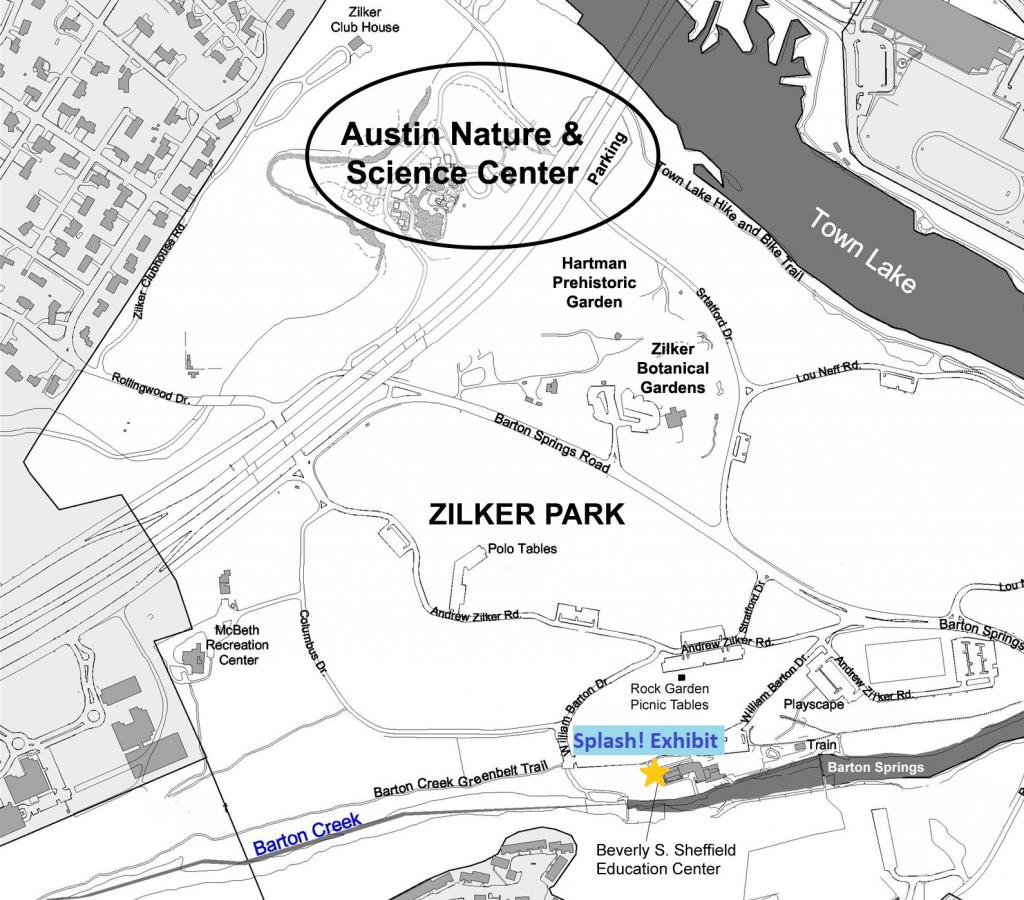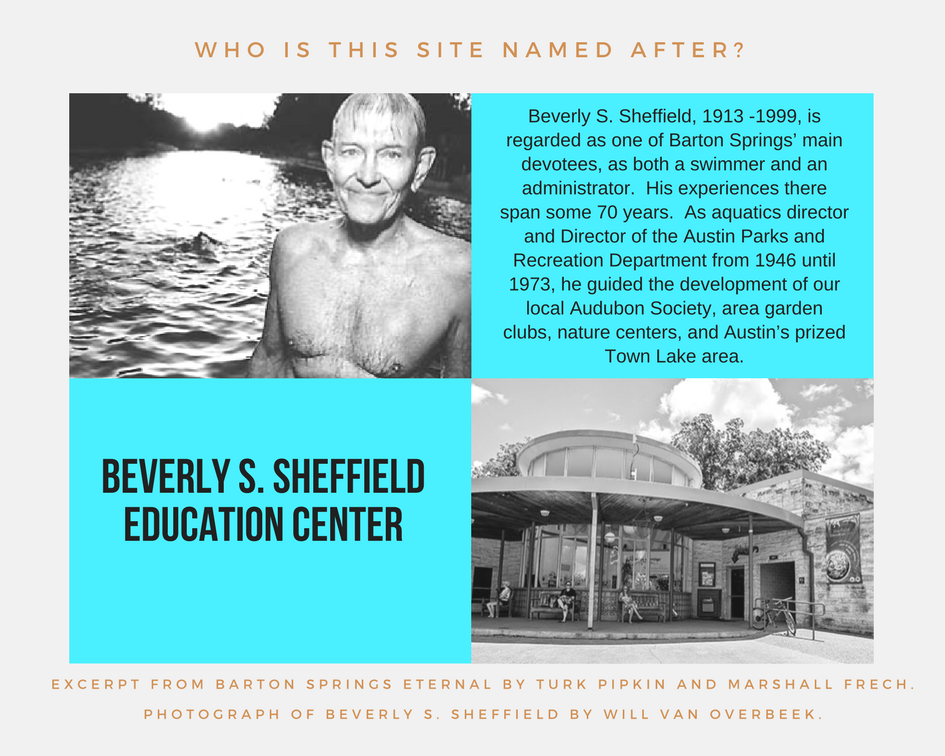Temporary Closure
The Beverly S. Sheffield Education Center is temporarily closed as part of the Joan Means Khabele Bathhouse at Barton Springs Pool Rehabilitation Project. Public parking on the north side of Barton Springs Pool will not be available, and William Barton Drive will be limited to emergency vehicles, construction deliveries, and vehicles needing accessible parking. For more information, visit the Joan Means Khabele Bathhouse at Barton Springs Pool Rehabilitation project page.
The Beverly S. Sheffield Education Center has housed the Splash! Into the Edwards Aquifer exhibit and various rotating exhibits, and has partnered with the Austin Nature & Science Center to offer educational programs.
The renovation will relocate the main entrance to Barton Springs Pool into the Beverly S. Sheffield Education Center. The mission of Sheffield Education Center is to foster stewardship of Barton Springs and the Edwards Aquifer through education, and the renovations provide an exciting opportunity to reach many of the approximately 1 million visitors that swim in Barton Springs Pool annually.



